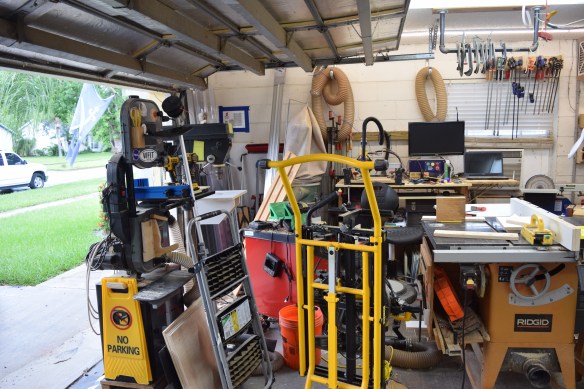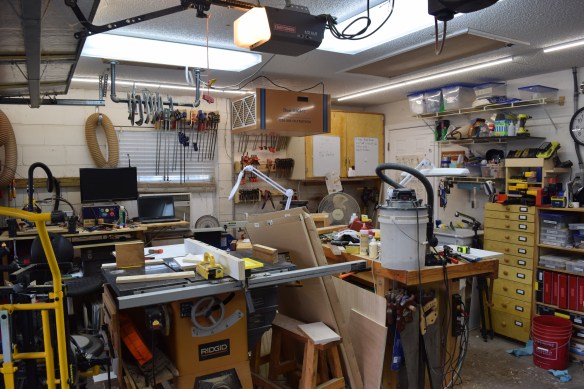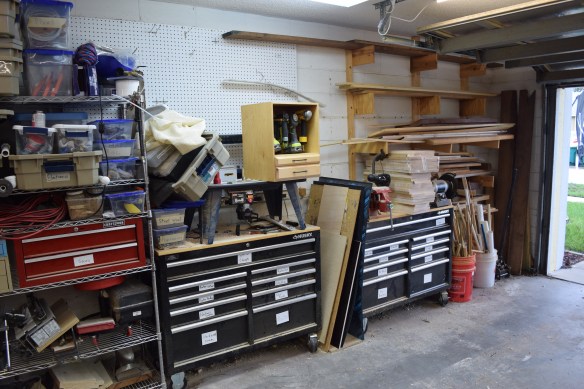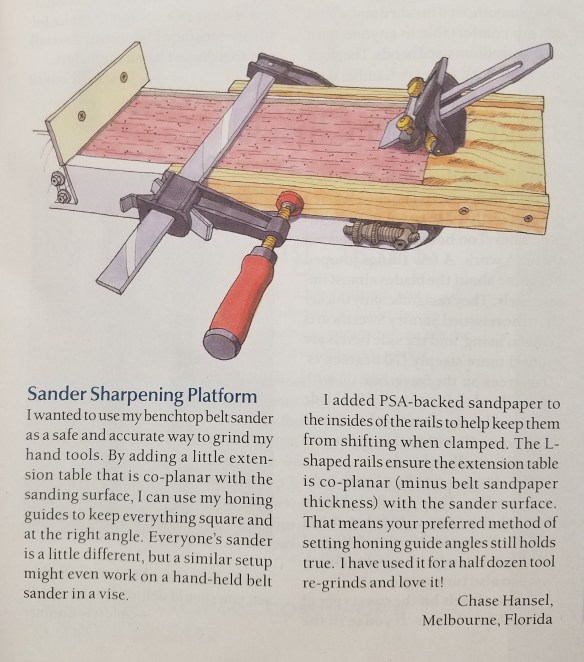Air nailers are a pretty wonderful invention. They can provide low visibility fastening in a lot of different applications. I have had a brad nailer for ages, and picked up a good pin nailer when I redid the kitchen. The cordless electric nailers are a lot heavier than their air counterparts, but for just a few quick hits, they are awesome. I recently built up a full inventory of air and electric brad and pin nailers. Time to put those nailers to work building a little home for all these gadgets.
I planned out a cavity to hold all the nailers up top, and a set of drawers below to keep the nails and other accessories. 1/2″ maple made up all the components except the drawer bottoms.
Once assembled I cut more plywood with a 45 degree angle on it to act as a french cleat across the back. The electric nailers sit nicely on their own, but the air ones will need hangers. Plus, this lets me rearrange things, or add dividers if I feel the need later down the line.
I played with the arrangements, and there are lots of spacing options that work. Big enough to be flexible, but not so big as to waste space.

This is a decent looking cabinet on its own, and is about where I would stop in my previous builds. I wanted to add a little something, so I made my own maple edge banding.
The pin nailer came in handy for securing it all, and hand planing really lets you sneak those parts into a good fit. With the body of the cabinet in shape I turned to the drawers. I thought drawer fronts with chamfers might be a neat flare, and I had a new router bit to try out. I cut all the end grain chamfer while it was still a solid long block, then cut the two fronts out and routed the long grain. It completely mitigated any tear-out issues. I finally feel like all those minor screw ups of the past are congealing into wisdom.
Everything got multiple coats of danish oil. Not a bad finish, I like the wipe on aspect and how it looks. Honestly though, it is just some kind of thinned linseed oil. At probably 4x the price of basic linseed oil, I might just figure out how to thin that stuff myself.
I 3D printed organizers to keep each set of nails contained and labeled. The drawer I had these in was a mess with different nail lengths all mixed up. Mishaps have occurred from pulling the wrong length nail ream. If I ditched the manuals I could have probably combined everything in one drawer. Oh well, this provides ample expansion for new nail lengths, or other jigs/accessories I might acquire.
The final design looks pretty nice. I will see how much dust it collects and consider adding doors later, but for now it is perfect.


















































